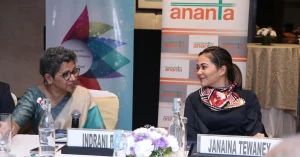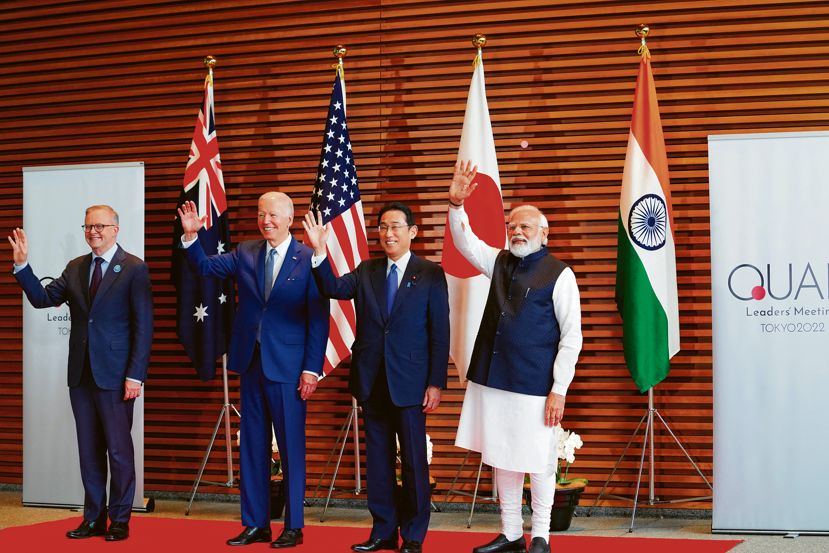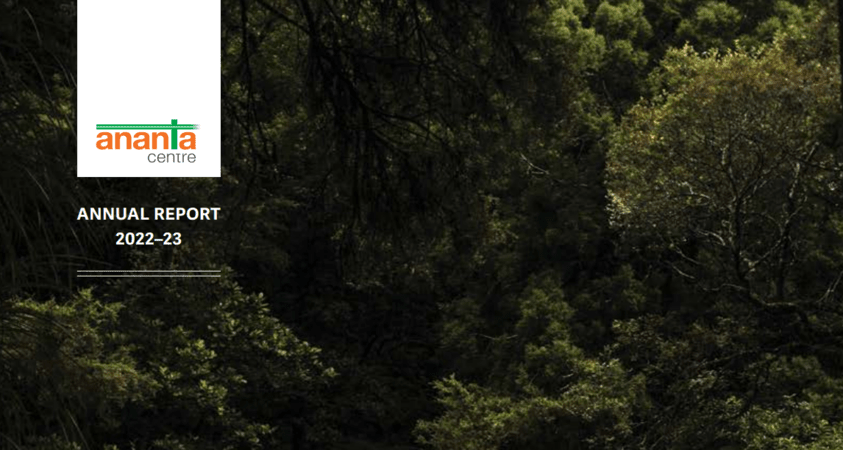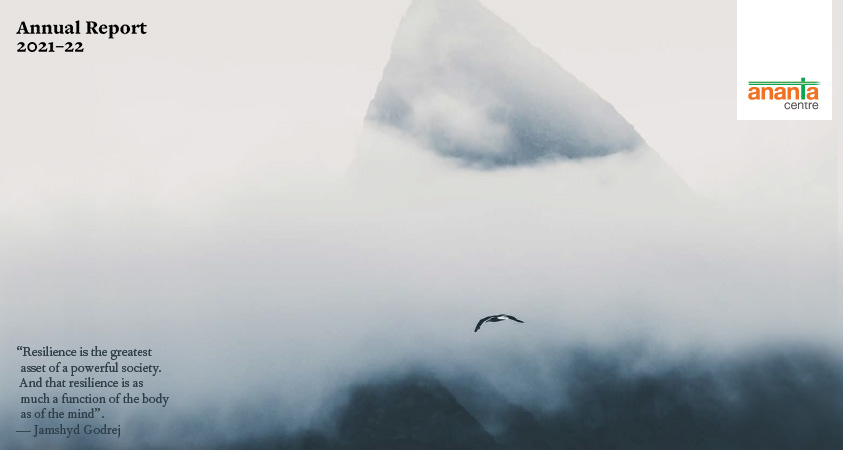Can India Keep Its Neighbours Close? Security, Connectivity, and the Fight for Influence
For decades, the concept of neighbourhood security in South Asia has been dominated by a security-centric approach. This approach, characterized by a focus on military build-up and border defence, has proven insufficient in fostering lasting peace and stability in the region. Recent years, however, have witnessed a growing recognition within the Indian government that a more holistic approach is necessary. India, a rising power, finds itself at the centre of a vibrant yet intricate neighbourhood – South Asia. As India’s economic and strategic influence expands, it has the potential to translate its long-held aspirations of global leadership into action. This ascent, however, hinges heavily on India’s past and future engagement with its immediate neighbours.
For over seven decades, New Delhi has fostered relationships with its neighbours through various aid programs. These partnerships, expected to grow alongside India’s prosperity, serve not only regional stability but also India’s own economic and strategic ambitions. India’s current strategy for enhancing regional security therefore, hinges on a shift towards economic integration and positive economic unilateralism. To ensure success, India’s approach must prioritize four key areas: (a) Addressing security challenges: a stable neighbourhood is paramount for India’s own security. Effectively navigating regional security concerns will be crucial. (b) Enhancing connectivity: building strong physical and digital infrastructure links will foster economic integration and cooperation within the region. (c) Building strong bilateral ties: investing in robust, one-on-one relationships with each neighbour will foster trust and mutual understanding. (d) Leveraging soft power: India’s rich cultural heritage and democratic values can be powerful tools in fostering goodwill and cooperation with its neighbours. By prioritizing these elements, India can transform its neighbourhood from a complex landscape into a springboard for its global ambitions.
India’s Security Landscape: A Balancing Act
India’s security landscape is a labyrinth of intertwined internal and external threats. The South Asian region, its immediate neighbourhood, carries the weight of historical grievances, unresolved territorial disputes, and political instability. Uneasy borders with Pakistan, marked by the lingering Kashmir issue and cross-border terrorism fuelled by militant groups, pose a constant security concern. China’s assertive territorial claims along the Line of Actual Control (LAC) further complicate matters. Regional instability in Afghanistan, Myanmar, and Nepal creates fertile ground for extremism that can potentially spill over into India. The growing influence of both China and the United States in the Indian Ocean Region (IOR) adds another layer of complexity, forcing India to navigate strategic partnerships with great caution.
India’s neighbourhood plays a dual role in its security. On the one hand, some neighbours like Pakistan, with their ongoing disputes and support for militant groups, can be a source of instability. However, on the other hand, stable and friendly neighbours like Bhutan and Bangladesh act as a buffer against external threats. Additionally, growing regional economic integration fosters cooperation and creates opportunities to address shared security concerns.
To address these challenges, India has adopted a multi-pronged approach. It is continuously modernizing its armed forces and developing indigenous defence capabilities. Additionally, increased patrolling, improved border infrastructure, and advanced surveillance technologies are being implemented along disputed borders. Recognizing the importance of regional cooperation, India’s “Neighbourhood First Policy” aims to build stronger relationships with its neighbours through economic cooperation and infrastructure development. Finally, India cooperates with regional and international partners to counter terrorism and extremism.
Building Bridges through Connectivity and Weaving a Regional Web
India’s “Neighbourhood First” policy, launched in 2014, prioritizes fostering positive relations with its immediate neighbours. Recognizing the interconnectedness of South Asia, India views a peaceful and stable region as vital for its own development. This policy emphasizes open communication and cooperation on various fronts.
One key aspect is disaster preparedness and management. Given the region’s vulnerability to natural disasters, India offers assistance in disaster response, resource management, and communication. This collaborative approach strengthens regional resilience.
The policy goes beyond immediate needs. Embracing the spirit of “Vasudhaiva Kutumbakam” (the world is one family), India extends significant development assistance to Afghanistan and Sri Lanka to address their challenges. Since the Taliban takeover, India has provided humanitarian aid like wheat, essential food items, and even Covid-19 vaccines to Afghanistan. The Neighbourhood First policy holds strategic value for India’s future. Sustained engagement fosters regional stability, a crucial factor for India’s economic and strategic development. A stable and prosperous neighbourhood strengthens India’s position in the region, providing much-needed depth in these areas. India’s security and economic well-being are intrinsically linked to the well-being of its neighbours.
Enhancing regional connectivity forms a central pillar of the policy. Infrastructure projects like roads, railways, waterways, and power grids connect India with its neighbours (Afghanistan, Bhutan, Bangladesh, Maldives, Pakistan, Nepal, and Sri Lanka). Initiatives like the BBIN corridor and the Kaladan Multi-Modal Transit Transport Project aim to create seamless trade routes and boost economic activity. These projects offer a win-win solution, fostering regional integration and cooperation through stronger partnerships.
India’s improved connectivity goes beyond economics. It facilitates cultural exchange and strengthens people-to-people ties. Educational and cultural programs, visa liberalization, and tourism promotion all contribute to building trust and understanding, creating a more integrated and peaceful South Asia.
India’s Neighbourhood: A Balancing Act
India’s foreign policy prioritizes fostering strong relationships with its neighbours, a concept outlined in the “Neighbourhood First” policy. However, each neighbour presents unique challenges and opportunities, requiring a nuanced approach.
Himalayan Kingdoms: India’s ties with Bhutan and Nepal are based on deep historical and cultural bonds. Economic and military assistance flow from India, but these partnerships are underpinned by respect for Bhutan and Nepal’s strategic autonomy. While ethnic tensions simmer within these Himalayan kingdoms, India treads a careful line, promoting stability without interference.
A Complex Tapestry: The relationship with Bangladesh is multifaceted. A long shared border and a complex past shape their interactions. The porous border allows for movement of people seeking better opportunities in India. Bangladesh’s rapid economic rise and geographic position as a bridge between South and East Asia present a strategic opportunity for India’s regional and global ambitions. Capitalizing on this requires a two-pronged approach.
First, India should leverage Bangladesh’s booming economy. Increased trade and investment will benefit both nations. Trade is a central pillar of their future, with initiatives like the Comprehensive Economic Partnership Agreements (CEPA) and the Bay of Bengal Initiative aiming to boost economic ties. This cooperation fosters growth in both nations, extending to water management, infrastructure projects, and scientific collaboration.
Second, India’s democratic values necessitate a strong stance against any authoritarian tendencies in Bangladesh. However, a purely top-down diplomatic approach is insufficient. To build a sustainable relationship, India must foster people-to-people connections. Cultural exchanges, educational programs, and business collaborations can create a strong foundation for a mutually beneficial partnership that aligns with India’s democratic principles.
Strategic Anchor: Sri Lanka holds strategic importance for India, with stability being a key concern. India provides development assistance, fosters cultural exchange, and collaborates on maritime security. Integrating Sri Lanka into the developing economic corridor in the Bay of Bengal presents an progressing opportunity. Bhutan and Bangladesh’s recent port access agreement paves the way for Sri Lanka’s potential inclusion, further strengthening regional connectivity.
Countering China’s Influence: Myanmar presents a different dynamic. India seeks to counter China’s growing influence by strengthening economic and strategic ties. Investments in infrastructure and energy cooperation, like the Kaladan Multi-Modal Transit Transport Project, exemplified this strategy. However, the connectivity project faced a setback after the Arakan Army (AA) captured the Paletwa township near Mizoram border.
Soft Power: Beyond Borders
India’s influence extends beyond its physical borders through the potent force of soft power. This multifaceted approach leverages cultural allure, technological expertise, and democratic values to cultivate strong relationships with its neighbours. Culturally, India enjoys a captivating reach. Bollywood films, with its vibrance and dramatic narratives, transcend language barriers, captivating audiences across the region. This shared experience fosters a sense of cultural affinity and a common identity that bridges national divides. Similarly, the ancient practice of yoga has gained immense popularity, promoting not just physical well-being but also a holistic approach to life that resonates with many. The ubiquitous presence of Indian cuisine, with its diverse flavours and aromatic spices, further strengthens these cultural ties.
Beyond cultural magnetism, India offers a helping hand through its technological prowess. By sharing its expertise in areas like Information Technology (IT), agriculture, and healthcare, India strengthens its bonds with neighbouring countries. Training programs and technical assistance empower partner nations to develop their own capabilities. India’s success in the IT sector, for instance, serves as a model for others seeking to build a robust digital infrastructure. Similarly, advancements in agriculture and healthcare are readily shared, fostering goodwill and showcasing a development model that prioritizes self-sufficiency and social well-being.
One of the most significant aspects of India’s soft power is its vibrant democracy. As the world’s largest democracy, India stands as an inspiration for its neighbours. The peaceful transfer of power through elections and the active participation of a diverse citizenry demonstrate the power of democratic ideals. This commitment to democratic values promotes regional stability and encourages other nations to embrace democratic processes for a more peaceful and just future.
The Indian Technical and Economic Cooperation (ITEC) program exemplifies India’s commitment to knowledge sharing. Established in 1964, ITEC offers training programs in various sectors to partner countries across Asia, Africa, and beyond. This program not only strengthens technical expertise but also fosters long-lasting professional and cultural connections.
Challenges and the Way Forward
Despite its efforts, India faces challenges in navigating its neighbourhood. The structural shift makes it difficult for India to compete effectively in meeting the material needs of its neighbours, leading them to tilt towards China. Historical mistrust, unresolved border disputes, and internal political instability in some neighbouring countries can hinder progress. Balancing its own interests with those of its neighbours requires careful diplomacy. India’s growing power dynamics within the region also need to be managed with sensitivity. It’s crucial to ensure that its assistance and partnerships are seen as beneficial, not overbearing.
Moving forward, India needs to continue to invest in building trust, addressing security concerns through dialogue, and fostering regional integration. By promoting inclusive development, strengthening bilateral ties, and leveraging its soft power, India can create a more stable, prosperous, and interconnected neighbourhood – one that benefits all.
Conclusion
India’s approach to regional security is undergoing a significant transformation. Moving away from a solely security-centric perspective, India is now prioritizing economic integration and positive economic unilateralism. This shift in strategy recognizes that shared economic prosperity is a crucial foundation for lasting peace and stability in South Asia. While challenges remain, such as overcoming historical mistrust and addressing infrastructural deficiencies, the potential benefits of this new approach are significant. Increased intra-regional trade, seamless inter-connectivity, and collaborative economic development all have the potential to foster stronger regional ties and ultimately create a more secure and peaceful South Asia. Further research is needed to assess the long-term success of this strategy, but the initial steps taken by India suggest a promising path forward for regional cooperation.
India’s soft power, a combination of cultural influence, technological prowess, and democratic values, plays a crucial role in shaping its neighbourhood relations. By fostering a sense of shared identity, offering technical assistance, and promoting democratic ideals, India builds goodwill and strengthens its position as a regional leader. As India continues to grow and develop, its soft power is likely to become an even more potent force, shaping a more peaceful, prosperous, and interconnected future for the region. India’s evolving security approach, with its focus on economic development and soft power, has the potential to create a more secure and peaceful South Asia.
[i]Kumar, Dr. Amit, “India’s primacy in the neighbourhood: Assessing contest, context and challenges”, Times of India, March 14, 2024, see: https://timesofindia.indiatimes.com/blogs/voices/indias-primacy-in-the-neighbourhood-assessing-contest-context-and-challenges/
[ii]Shivamurthy, Aditya Gowdara, and Shekhawat, Shivam, “The Prime Quest for the Neighbourhood: India@76”, Observer Research Foundation, August 14, 2023, see: https://www.orfonline.org/expert-speak/the-prime-quest-for-the-neighbourhood
[3] Bhaumik, Anirban, “What’s brewing in India’s neighbourhood?”, Deccan Herald, February 4, 2024, see: https://www.deccanherald.com/world/what-s-brewing-in-india-s-neighbourhood-2878740
[4] Baruah, Darshana M., Labh, Nitya, and Greely, Jessica, “Mapping the Indian Ocean Region”, Carnegie Endowment for International Peace, June 15, 2023, see: https://carnegieendowment.org/2023/06/15/mapping-indian-ocean-region-pub-89971
Miller, Manjari Chatterjee, and Harries, Claire, “India’s Efforts to Strengthen Indian Ocean Region”, Council on Foreign Relations, July 18, 2023, see: https://www.cfr.org/blog/indias-efforts-strengthen-indian-ocean-security
[5]“India Adopting Three-Pronged Approach for Internal Security Challenges: Rajnath Singh”, NDTV, November 5, 2020, see: https://www.ndtv.com/india-news/india-adopting-three-pronged-approach-for-internal-security-challenges-rajnath-singh-2321319
[6]Aryal, Saroj Kumar, and Bharti, Simant Shankar, “Evolution of ‘India’s Neighbourhood First Policy’ since Independence”, Springer, February 6, 2023, see: https://link.springer.com/article/10.1007/s12115-023-00819-y
[7]Ibid.
[1]Srivastava, Mukesh Kumar, “India’s Neighbourhood First Policy”, The Kathmandu Post, May 16, 2022, see: https://kathmandupost.com/columns/2022/05/15/india-s-neighbourhood-first-policy
[1]“India and Neighbours”, Ministry of External Affairs, see: https://www.mea.gov.in/india-and-neighbours.htm#:~:text=This%20centrality%20of%20neighbours%20in,contribute%20to%20India’s%20own%20prosperity.
[1] Bambawale, Gautam, “Ties that epitomise India’s neighbourhood first policy”, The Hindu, March 20, 2024, see: https://www.thehindu.com/opinion/op-ed/ties-that-epitomise-indias-neighbourhood-first-policy/article67969422.ece
[1] Rahman, Zillur, “Bangladesh-India relations: An increasingly complicated friendship”, The Daily Star, December 12, 2023, see: https://www.thedailystar.net/opinion/geopolitical-insights/news/bangladesh-india-relations-increasingly-complicated-friendship-3492346
Sumeda, “Sheikh Hasina’s re-election and the growth of India-Bangladesh relations | Explained”, The Hindu, January 18, 2024, see: https://www.thehindu.com/news/national/sheikh-hasina-election-india-bangladesh-modi-victory-explain-bilateral-new-delhi-dhaka/article67738278.ece
[1]Bosetti, Giancarlo, “The Uncertain Glory Still Under Observation”, Reset Dialogues on Civilizations, April 4, 2024, see: https://www.resetdoc.org/story/modis-india-is-late-with-much-to-learn-from-bangladesh-an-interview-with-jean-dreze/
Markey, Daniel, “The Strategic Implications of India’s Illiberalism and Democratic Erosion”, Asia Policy, National Bureau of Asian Research (NBR), Vol. 17, No. 1 (JANUARY 2022), pp. 77-106.
[1]Kandaudahewa, Dr. Hasith, “Sri Lanka’s Strategic Dilemma: Navigating Great-Power Rivalry in the Indo-Pacific”, Air University, September 21, 2023, see: https://www.airuniversity.af.edu/JIPA/Display/Article/3533622/sri-lankas-strategic-dilemma-navigating-great-power-rivalry-in-the-indo-pacific/
[1] Fruman, Cecile, “5 key takeaways on regional cooperation in South Asia in 2023”, World Bank Blogs, December 26, 2023, see: https://blogs.worldbank.org/en/endpovertyinsouthasia/5-key-takeaways-regional-cooperation-south-asia-2023
Sevkani, Bhumika, “Revival of Bay of Bengal: Bhutan and Bangladesh Agree on Sea Port Access”, 9DashLine, May 16, 2023, see: https://www.9dashline.com/article/revival-of-bay-of-bengal-bhutan-and-bangladesh-agree-on-sea-port-access
[1] Bhattacharjee, Kallol, “India’s Kaladan project ‘almost dead’ after Paletwa fell to Arakan Army: senior Myanmar Opposition leader”, The Hindu, February 8, 2024, see: https://www.thehindu.com/news/international/indias-kaladan-project-almost-dead-after-paletwa-fell-to-arakan-army-senior-myanmar-opposition-leader/article67825130.ece
[1] Satpathy , Dr. Binod Bihari, “Indian Culture and Heritage”, DDCE, Utkal University, see: https://ddceutkal.ac.in/Syllabus/MA_history/paper-8-N.pdf
[1]“India has built a world-class digital infrastructure: IMF”, The Economic Times, April 6, 2023, see: https://economictimes.indiatimes.com/news/india/india-has-built-a-world-class-digital-infrastructure-imf/articleshow/99292123.cms?from=mdr
[1]Jaishankar, Dhruva, “India rising: Soft power and the world’s largest democracy”, Brookings, September 17, 2018, see: https://www.brookings.edu/articles/india-rising-soft-power-and-the-worlds-largest-democracy/
[1] “Capacity Building and Technical Assistance as Development Partnership”, Ministry of External Affairs, see: https://www.mea.gov.in/Capacity-Building-and-Technical-Assistance-as-Development-Partnership.htm#:~:text=The%20Government%20of%20India%20provides,IT%20and%20vocational%20training%20centres.
[1] Kumar, Dr. Amit, “India’s primacy in the neighbourhood: Assessing contest, context and challenges”, Times of India, March 14, 2024, see: https://timesofindia.indiatimes.com/blogs/voices/indias-primacy-in-the-neighbourhood-assessing-contest-context-and-challenges/
[1]Nayar, K.P., “Challenges in India’s Neighbourhood”, The Tribune, November 6, 2023, see: https://www.tribuneindia.com/news/comment/challenges-in-indias-neighbourhood-559781
Swati Sinha
Swati Sinha is currently a Doctoral Candidate at the Jindal School of International Affairs, O.P. Jindal Global University, Sonipat.























